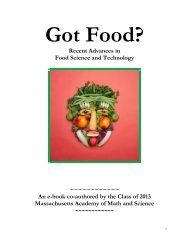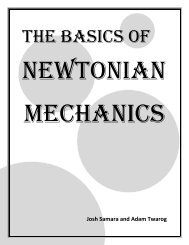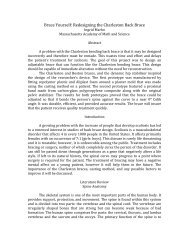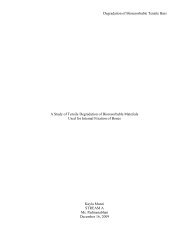Art Forgeries and Their Detection - the Scientia Review
Art Forgeries and Their Detection - the Scientia Review
Art Forgeries and Their Detection - the Scientia Review
You also want an ePaper? Increase the reach of your titles
YUMPU automatically turns print PDFs into web optimized ePapers that Google loves.
Digital Au<strong>the</strong>ntication<br />
A new method that was recently introduced in detecting art forgeries<br />
is known as digital au<strong>the</strong>ntication. Paintings are converted into digital<br />
images where this process is <strong>the</strong>n applied to <strong>the</strong>m. The digital picture<br />
is <strong>the</strong>n broken down into more basic images by wavelet decomposi-<br />
tion. This broken down images are called sub-b<strong>and</strong>s. A frequency is<br />
<strong>the</strong>n assigned to each sub-b<strong>and</strong> to determine <strong>the</strong> textures in <strong>the</strong> im-<br />
age. Broad strokes would have a low frequency, while fine strokes<br />
would have a high frequency. This method is becoming used increas-<br />
ingly more often. It was used on thirteen drawings attributed to Pieter<br />
Brueghel <strong>the</strong> Elder <strong>and</strong> revealed that five of <strong>the</strong>m were actually imita-<br />
tions.<br />
Virgin <strong>and</strong> Child with<br />
Saints was attributed to<br />
Pietro Perugino, but by<br />
using wavelet decom-<br />
position it was discov-<br />
ered that at least four<br />
different artists worked<br />
on <strong>the</strong> picture.

















